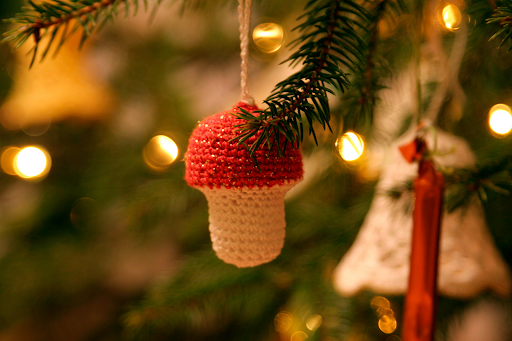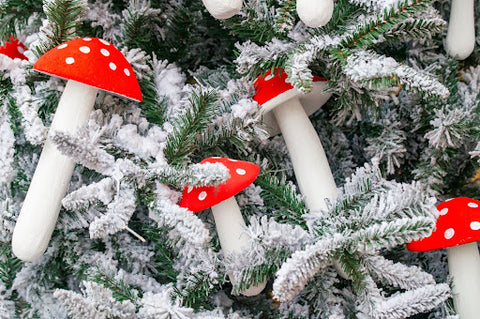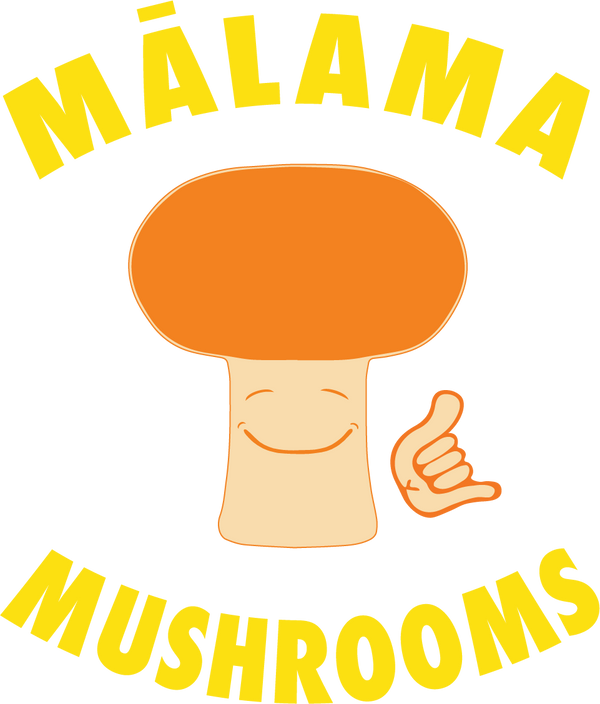
Santa was a Shroom Shaman: Meet the Psychoactive Mushroom that Created Christmas
Share
Santa was a Shroom Shaman: Meet the Psychoactive Mushroom that Created Christmas
It’s that time of the year once again where we bring evergreen trees into our homes, decorate them, and put shiny packages underneath. We tell children stories of a jolly old man dressed in red and white and his magic flying reindeer. One of which has a glowing red nose. But have you ever wondered where the origins of Christmas traditions and stories came from?
Some say the story of Santa Claus is based on Saint Nicholas – a Christian bishop from the 4th century who was known for his generosity and kindness. In Scandinavia, a joyful elf named Jultomten was believed to deliver gifts on a sleigh drawn by goats.
But there’s another fascinating story that’s rarely mentioned that could very well be the true origin of Santa Claus and many other classic Christmas traditions. A story based on the psychedelic mushroom, Amanita muscaria.
What Is Amanita muscaria?
Amanita muscaria is also referred to as fly agaric or fly amanita. It’s a psychoactive mushroom that can be toxic and can be deadly in high amounts or if not prepared properly. It’s found growing in forests all over the world from summer to late autumn, usually under coniferous trees. (Put a pin in that, we’re going to come back to it.)
If I were to ask you to think about what mushrooms look like, Amanita Muscaria might be the first image that pops into your head. They’re iconic-looking mushrooms with their bright red flesh and white spots. This otherworldly mushroom is often depicted in fairy tale illustrations surrounded by fairies or gnomes.
Amanita muscaria contains three toxic psychoactive alkaloids – muscarine, ibotenic acid, and muscimol. When ingested, these alkaloids can cause nausea, vomiting, dizziness, hallucinations, foaming at the mouth, loss of muscle control, and seizures. Though amanita muscaria is toxic, deaths from it are rare. (1,2)
Amanita muscaria is psychoactive. It has been used in Shamanic rituals for thousands of years, notably by Siberian tribes. The shamans were able to remove some of the toxins in the mushrooms by dehydration or by boiling them twice.
Legend has it that Vikings used to consume Amanita muscaria to go “berserk” during raids. They would enter a trancelike state of fury, often howling like wild animals and allegedly biting their own shields. Often, they would be so consumed with blind rage that they would accidentally kill their own soldiers.
This is all speculation of course. Researchers and historians have never been able to prove that fly agaric is what made the Vikings go berserk. But it hasn’t been ruled out either.
Do Santa’s Magic Reindeer Come From Siberia?
They say that Santa Claus lives at the North Pole, flies through the sky on a sleigh pulled by flying reindeer, and delivers presents to children around the world on Christmas Eve.
Thing is, reindeer can't fly. There's no evidence that Santa exists anywhere but in our heads, and nobody has ever found a single present he left under any Christmas trees. (Sorry kids).
So where did we get this crazy story? According to at least one theory, from Amanita muscaria.
The thing is, wild reindeer have been known to eat mushrooms. And they particularly love Amanita muscaria. The theory goes that ancient peoples in Siberia observed reindeer acting particularly frisky after eating Amanita muscaria. Similarly to how the Vikings went berserk after consuming it.
Curious, Siberian shamans decided to try it for themselves with the help of the reindeer. Since Amanita muscaria can make you very sick when unprocessed, they collected and drank the pee from reindeers that consumed the mushroom instead. This helped filter out some of the toxins.
The psychedelic effects of fly agaric have been said to induce feelings of joy, desire to sing, and the sensation of flying. So it’s quite possible that the Siberian shamans hallucinated that they saw the reindeer flying while under the influence.
But what about Rudolph? Well, Amanita muscaria might be able to explain that too. While the reindeer were eating the bright red mushroom, it kind of looked like they had a red nose. It’s possible that this simply was another hallucination by the ancient Siberian people.
Where Did Santa Come From?
So what about the big man? How does jolly old Saint Nic play into all this?
The origins of Santa are shrouded in mystery, but many traditions and folktales point to the Amanita muscaria.
The tribes of ancient Siberia would celebrate the winter solstice on December 21st, as many people still do today. This was a time ceremony for the Siberian tribes. The shaman would collect the Amanita muscaria in late autumn and dry it to be used in rituals.
As the legend goes, the Siberian shamans would deliver the dried Amanita muscaria to the people of the tribe. But there was a small problem – people's homes were often completely covered in snow with no way to get in.
So what were they to do? They climbed up to the roof and dropped the dried mushrooms through the chimney. Similar to how modern Santa Claus climbs through the chimney to leave presents for good boys and girls.
Some speculate that the shamans would even dress in red and white robes to match the mushroom while they were making their deliveries. Other’s say that Santa’s get-up is directly based on the striking colors of Amanita muscaria. Plus, they’re both round, plump, and joyful-looking. Whatever the truth may be, the resemblance is hard to ignore.

What About Santa’s Elves?
Santa couldn’t possibly make enough toys for all the children in the world on his own. That’s why he recruited his faithful elves to help him. At least that’s how the tall tale goes.
Santa’s elves is another legend that’s believed to be based on Norse mythology. Scandinavian and Celtic cultures had their own myths regarding elves, fairies, and nature spirits too. But just like Santa’s flying reindeer, this is another Christmas story that might actually be rooted in Amanita muscaria.
Santa’s elves could have been another hallucination by the Siberian shamans. One theory suggests that the shamans saw visions of spirits while under the influence of the psychedelic mushroom. Their visions of spirits later morphed into the story of Santa’s “helpers” that we know today.
Could the origin of Santa’s elves just have been another psychedelic hallucination? To us, it seems more plausible than the existence of actual elves.

The Origin Of Christmas Trees
What the heck started the weird Christmas tradition of going out into the woods, cutting down a tree, and bringing it inside to decorate? Some say that this holiday tradition of Christmas trees has German or pagan roots. But another theory is that Amanita muscaria might be to blame.
As we mentioned earlier, Amanita muscaria is usually found growing below coniferous trees. Just like the douglas fir tree in your home.
Some say that the origin of putting gifts beneath a Christmas tree was meant to represent the Amanita muscaria. You have to admit, red and white Christmas packaging looks quite similar to the red and white colors of Amanita muscaria.
Imagine how it must’ve felt for a foraging shaman to spot a beautiful red and white mushroom growing beneath an evergreen tree. It probably brought them as much joy as a child seeing wrapped packages beneath their Christmas tree.
After the Siberian shamans would collect the Amanita muscaria from beneath the trees, they would need to dry them. And they would do this by hanging the mushrooms from the evergreen trees. Could these striking mushrooms be the original Christmas tree ornaments? Some think so.
The Truth Behind Christmas Legends
So does the magic of Christmas really come from Amanita muscaria? It’s possible. It’s definitely a fascinating anecdote about holiday traditions. And it’s certainly more credible than some of the other theories out there.
If you’ve ever experienced the hallucinogenic qualities of magic mushrooms, then you know that the things you see and feel while under the influence are not things you can easily explain. I wouldn’t be surprised if someone huddled around a campfire in late December taking Amanita muscaria, had a vision of a flying sled manned by reindeer and a jolly old man who left gifts for children underneath their trees.
The key to understanding this theory is knowing that legend has a way of preserving parts of reality. This is what happens when societies and cultures pass down stories through generations. Even the most outlandish tales are at least partly grounded in some sort of historical fact. So while the theory of Santa Claus being based on ancient mushroom-induced visions sounds crazy, it may also be one of the most compelling explanations available.
We may never know whether Santa and his reindeer were inspired by Amanita muscaria, but you can be sure that someone somewhere thought so.
Where do you think the origins of Christmas traditions come from? Is Amanita muscaria’s influence on Christmas traditions, folklore or fact? Tell us what you think in the comments below!
Sources:
- https://www.ncbi.nlm.nih.gov/pmc/articles/PMC7977045/#:~:text=Amanita%20muscaria%20is%20a%20highly%20poisonous%20mushroom%20due%20to%20the,the%20CNS%2C%20stimulating%20glutamate%20receptors.
- https://pubmed.ncbi.nlm.nih.gov/22010435/





3 comments
Hi loved the article. Where did you get the info about Norse folklore from?
That is a very inspired and very brave riff on Holidays, Mushrooms, and mythological entities.
I think these traditions came from many different sources originally and were later woven together under Queen Victoria and her German consort. I have also read that the amanita mushrooms were made into a paste which women shamans (witches) would apply to their bodies to experience the sensation of flying.